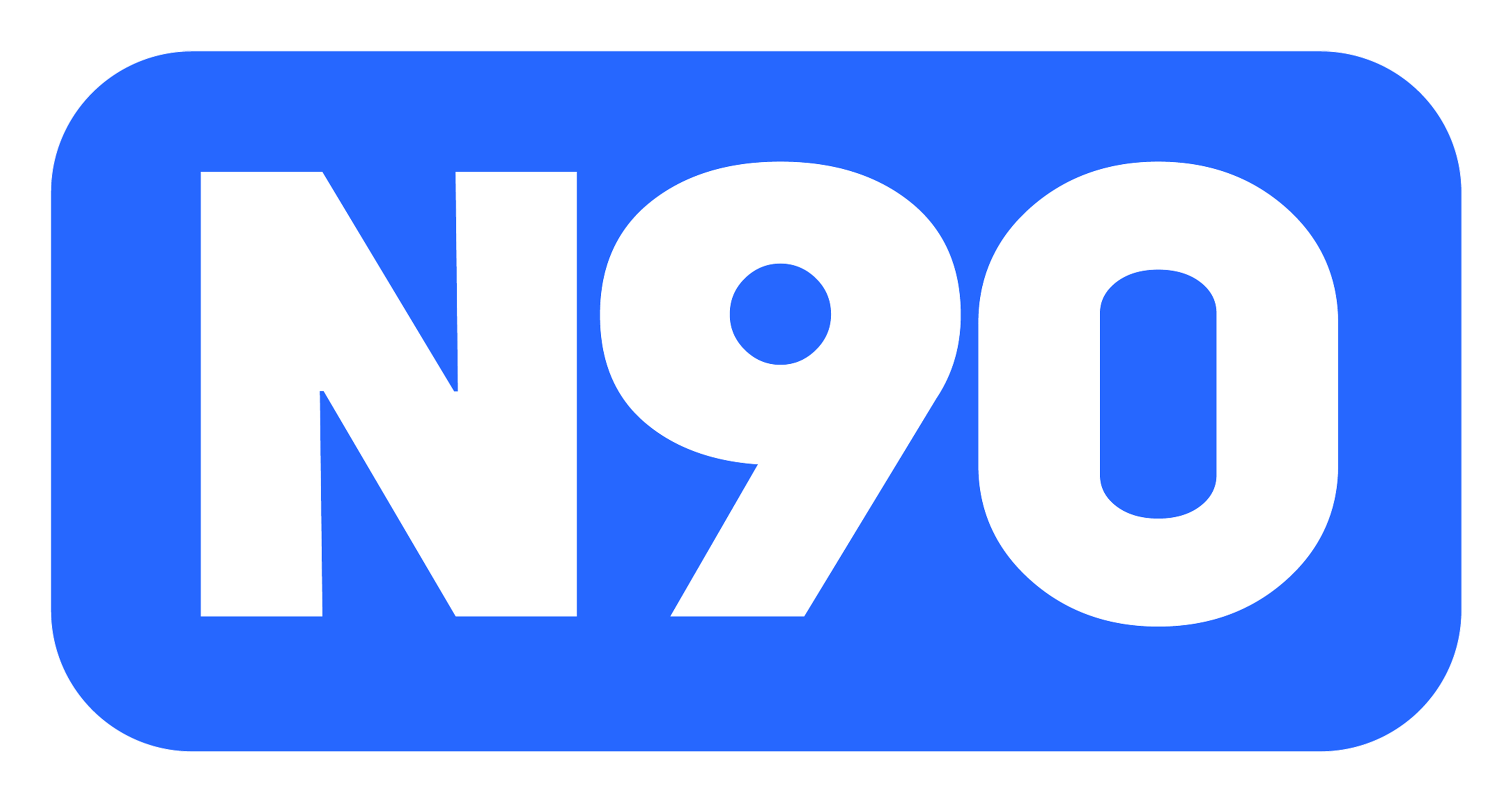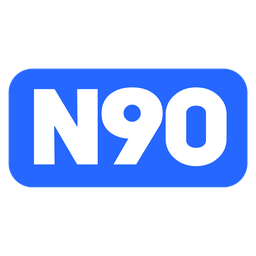Starting a business, whether a small local shop or a high-growth tech startup, requires financial fuel. However, with a vast array of loan options already available, navigating the world of business financing can feel overwhelming.
The landscape of commercial and business loans in the Philippines can be quite complex for young entrepreneurs to understand, yet it's crucial for them to secure the right type of financing to support their business’s operations and growth.
Both commercial and business loans are designed to meet various financial needs, from purchasing real estate and equipment to managing working capital and expanding business activities, but many are still unclear about their true purpose.
To help with this confusion, this guide will explore the different types of commercial and business loans available and help you understand their key differences. Moreover, we’ll also examine the distinct characteristics of each loan category, exploring factors like eligibility criteria, typical loan amounts, interest rates, and much more.
What is a Commercial Loan?

A commercial loan is a financial tool specifically designed to support businesses. It's like a jumpstart provided by a bank or lender, injecting much-needed capital to fuel your company's growth.
These loans can be used for various purposes, from purchasing equipment or inventory, funding real estate acquisitions, or covering operational costs. Unlike personal loans, which finance individual needs, commercial loans are earmarked for business expenses and require a strong business plan and financial history to qualify.
What is a Business Loan?
A business loan is a financial product that boosts your business's cash flow. It's like borrowing money from a bank or lender with the promise to repay the principal amount plus interest over a set timeframe.
These loans can be used for various purposes, from funding startup costs and purchasing inventory to covering operational expenses or expanding your business. Unlike personal loans, business loans typically offer lower interest rates and more flexible repayment terms, making them a strategic financial option for business owners and entrepreneurs.
To make things easier, let's put commercial and business loans side by side and highlight the main differences.
Also Read: Top 5 Legit Online Loan Apps in the Philippines
Commercial And Business Loans - Key Differences
Deciding on the right loan for your business growth can be tricky as both commercial loans and business loans offer financial fuel, but they cater to different needs.
So, in this section of the article, we'll explore factors like loan size, eligibility criteria, and typical uses to help you choose the perfect financial tool to propel your business forward.
Here, take a look at some of the crucial differences between commercial and business loans -
Commercial Loan
- It is primarily used for purchasing, refinancing, or developing commercial real estate properties such as office buildings, retail spaces, or industrial facilities. It is often geared towards long-term investments in property and infrastructure.
- It typically requires the property to be purchased or developed as collateral. Due to the nature of real estate investments, it often involves high-value collateral.
- It generally involves larger loan amounts due to the high costs associated with real estate transactions.
- It usually has longer repayment terms, often spanning 10 to 30 years. Due to the long-term nature and collateral involved, interest rates may be more competitive.
- It often involves a more complex and lengthy application process, including detailed property appraisals and significant documentation. Lenders conduct extensive due diligence to assess the property's value and potential.
Business Loan
- It is designed to cover various business needs, including working capital, inventory purchase, equipment financing, and expansion. It is generally used for short to medium-term financial needs.
- It may be secured by various types of assets, including equipment, inventory, or even personal guarantees. Some business loans are unsecured and do not require collateral. The collateral requirements can vary and may be lower in value than commercial loans.
- Loan amounts can vary significantly based on the specific needs of the business, ranging from small short-term loans to larger amounts for significant investments.
- It typically has shorter repayment terms, ranging from a few months to several years. Interest rates can vary widely based on the type of business loan, lender, and borrower’s creditworthiness.
- The application process can be quicker and more straightforward, especially for unsecured or smaller loans. Lenders may offer more flexibility regarding required documentation and approval times.
Now, moving on to the various types of commercial loans available – here’s what you need to know.
Also Read: Unlocking Capital for SMEs in the Philippines: A View of Modern Financing Options
Types of Commercial Loans
Commercial loans offer a variety of financing options to fuel business growth. From term loans for major purchases to lines of credit for everyday needs, SBA loans for startups, and equipment financing for specific needs, numerous commercial loan options are available to fit each of your business’s goals and needs.
Here, take a look at some of the most popular commercial loans available in the Philippines -
1. Term Loans
A term loan is a lump sum of money that a business borrows from a bank or other lender. The business then repays the loan, plus interest, over a fixed period. Term loans are often used for financing major capital expenditures, such as the purchase of real estate or equipment.
2. Small Business Administration (SBA) Loans
The SBA is a government agency that provides loans to small businesses. SBA loans are typically guaranteed by the government, which makes them less risky for lenders and can result in lower interest rates for borrowers. SBA loans can be used for various purposes, such as starting, expanding, or purchasing equipment.
3. Line of Credit
A line of credit is a revolving loan that allows a business to borrow money up to a specific limit. The business only pays interest on the amount borrowed. Lines of credit are often used for working capital, such as paying inventory or payroll.
4. Equipment Loans
Equipment loans finance the purchase of equipment such as machinery, vehicles, or computers. They are typically secured by the equipment itself, meaning the lender can repossess the equipment if the borrower defaults on the loan.
5. Commercial Real Estate Loans
Commercial real estate loans are used to finance the purchase of commercial property, such as office buildings, warehouses, or retail space. Commercial real estate loans are typically secured by the property itself, which means that the lender can foreclose on the property if the borrower defaults on the loan.
6. Invoice Factoring
Invoice factoring is a type of financing in which a business sells its invoices to a factoring company at a discount. The factoring company then collects the payments from the business's customers and remits the money to the business minus a factoring fee. Invoice factoring can be a good option for companies with many outstanding invoices that need to improve their cash flow.
7. Merchant Cash Advances
A merchant cash advance is a lump sum of money that a business receives from a lender in exchange for a percentage of its future sales. It can be a good option for companies that need cash quickly but need better credit. However, merchant cash advances can be expensive, so comparing rates from different lenders is vital before applying.
8. Bridge Loans
A bridge loan is a short-term loan that covers a temporary gap in a business's cash flow. It is typically repaid within a few months. Companies may use a bridge loan to cover expenses between closing the sale of one asset and purchasing another.
9. Franchise Loans
Franchise loans are loans that are specifically designed to help businesses finance the purchase of a franchise. They are often secured by the franchise's assets, such as the franchise agreement and the equipment.
10. Microloans
Microloans are small loans provided to small businesses and startups. They can be a good option for companies that need a small amount of money to start up or grow.
11. Asset-Based Loans
An asset-based loan is a loan secured by a business's assets, such as inventory, receivables, or equipment. It can be a good option for businesses with many assets but need more credit.
Great! We’ve tackled commercial loans; let’s delve into business loans, starting with the available types.
Also Read: Leveraging Invoice Financing for Business Growth in the Philippines
Types of Business Loans
Launching or scaling a business requires financial muscle, and business loans come in various forms to address that very need, from traditional term loans for equipment or property purchases to microloans for startups and short-term lines of credit for managing cash flow.
Here, take a look at some of the most popular types of business loans used in the Philippines -
1. Term Loans
These are the workhorses of business financing, offering a lump sum of cash repaid over a fixed term. They are perfect for significant investments in equipment, property, or expansion projects. Term loans often require solid financials and a good credit history.
2. Small Business Administration (SBA) Loans
Backed by the government, SBA loans offer more favorable terms for qualified small businesses. They can be used for various purposes, such as starting a business, expanding operations, or purchasing equipment. Eligibility criteria are typically less stringent than traditional loans.
3. Lines of Credit
Think of it as a business credit card. This revolving line of credit provides easy access to funds up to a specific limit, ideal for managing everyday operational expenses, covering shortfalls, or taking advantage of unexpected opportunities. The repayment process is ongoing as you borrow and repay.
4. Equipment Loans
Need that new machinery or delivery van? Equipment loans are specifically designed to finance the purchase of essential business equipment. The equipment typically secures them, meaning the lender can repossess it if you default on the loan.
5. Short-Term Business Loans
Facing a temporary cash-flow gap? Short-term loans provide a quick financial boost to bridge the gap, often repaid within a few months. They can help cover seasonal fluctuations, unexpected expenses, or inventory purchases.
6. Microloans
Microloans are Ideal for startups or small businesses with minimal funding needs. They offer smaller loan amounts suitable for covering initial inventory, marketing campaigns, or essential equipment costs. Government agencies or microfinance institutions often provide them with a focus on financial inclusion.
7. Merchant Cash Advances
This option offers a quick cash infusion in exchange for a percentage of your future sales. While convenient for immediate needs, merchant cash advances can be expensive due to high fees. Carefully evaluate the terms before applying.
8. Non-Collateral Business Loans
Unlike traditional loans, which require pledged assets, these loans are based on your business plan, creditworthiness, and growth potential. This makes them suitable for startups without established assets but potentially with higher interest rates.
So, what about the specifics of how commercial loans work here in the Philippines?
Take control of your finances. Apply for N90's quick financing and unlock your business's potential. Apply Today!
How Do Commercial Loans Work in The Philippines?

Commercial loans fuel the growth of businesses of all sizes, but how exactly do they work? Commercial loans are essentially agreements between a company and a lender, like a bank, where the business borrows a specific amount of money.
This borrowed sum called the principal, needs to be repaid with interest over a predetermined period, known as the loan term. Interest rates on commercial loans can vary depending on factors like the loan amount, loan term, the borrower's creditworthiness, and the type of loan itself.
Here's a breakdown of the entire process -
1. You Identify a Financial Need
Your business identifies a financing need, whether it's a new property, equipment purchase, or expansion plans. You approach a lender with a business plan outlining your goals and how the loan will be used.
2. Loan Application and Approval
You'll submit a formal loan application, including financial statements, credit history, and projections. The lender assesses your business's creditworthiness, repayment ability, and the feasibility of your plans. Based on this evaluation, they may approve or deny your loan request or potentially offer different loan terms.
3. Loan Agreement and Disbursement
A loan agreement outlining the terms is signed upon approval. This details the loan amount, interest rate, repayment schedule, and any collateral requirements. Once everything is finalized, the lender disburses the loan funds to your business.
4. Repayment Structure
As per the agreement, you'll make regular payments over the loan term, which include the principal amount and the interest. These payments will settle the borrowed amount and the interest accrued on it.
5. Include Collateral if Necessary
Some commercial loans are secured by collateral, like property or equipment. This offers security to the lender; if you fail to repay, they can seize the collateral to recoup their losses. Non-collateral loans are also available but might come with stricter eligibility criteria or higher interest rates.
If you're ready to take the plunge, let's walk through how to get a commercial loan in the Philippines.
Also Read: Understanding Collateral Loans: Types, Pros, and Cons
How To Get a Commercial Loan in The Philippines?
Transforming your business idea into a thriving Philippine enterprise requires securing the right financial resources. Commercial loans have emerged as a powerful tool for businesses of all sizes, but navigating through the application process in the Philippines can seem daunting.
Hence, in this section of the article, we will simplify the process of acquiring a commercial loan, equipping you with a step-by-step approach to secure the funding that propels your Filipino business dreams forward.
Here, check out the applications process of applying for a commercial loan in the Philippines -
1. Identify Your Needs
Before diving into the application process, take a step back. Clearly define your financing needs. Are you looking to invest in a new property, purchase essential equipment, or fuel expansion plans? A well-defined need will guide your loan search and help you choose the most suitable option.
2. Research Loan Options
The Philippine financial landscape offers various commercial loan products from banks and lending institutions. Research different options, comparing factors like interest rates, loan terms, eligibility criteria, and any specific requirements. Explore government loan programs that might cater to your industry or offer more favorable terms.
3. Prepare a Compelling Application
First impressions matter! Gather the necessary documents, typically including business registration papers, audited financial statements (if applicable), and business plans outlining your goals and how the loan will be used. Strengthen your application by showcasing a solid credit history and demonstrating the viability of your business plan.
4. Approach Potential Lenders
Armed with your research and a well-prepared application, approach potential lenders. This could involve contacting banks directly, visiting branches, or exploring online application portals. Be prepared to answer questions about your business, financial situation, and loan usage plans.
5. Negotiation and Approval
After submitting your application, the lender will evaluate your request. Negotiate terms like interest rates and repayment schedules to secure the most favorable deal for your business. Upon approval, carefully review the loan agreement, ensuring all terms and conditions align with your understanding.
6. Loan Disbursement and Repayment
Once the agreement is finalized, the lender disburses the loan funds to your business. Remember, repayment is crucial. Make timely payments according to the agreed-upon schedule to maintain a positive credit history and build trust with future lenders.
But what if you seek more flexible alternatives? Let’s explore some other financial services available to you.
Also Read: Types of Business Loans in the Philippines
Alternate Financial Services To Commercial And Business Loans In The Philippines
Commercial and business loans are potent tools for fueling business growth but are just some of the available options. The Philippine financial landscape offers diverse alternative financial services specifically designed to cater to businesses at various stages. These alternatives provide innovative ways to secure funding, attract investment, and manage cash flow.
This section will explore numerous other options beyond traditional loans, enabling you to choose options that perfectly align with your business's unique needs and growth strategy.
Here, take a look at some of the best alternative financial services to choose from instead of commercial and business loans in the Philippines -
1. Crowdfunding
This approach leverages the power of the crowd. Your business idea is presented on a crowdfunding platform, where individuals can contribute capital in exchange for rewards or equity. This can be a great way to test market interest, raise initial funding, and build a community around your brand.
2. Angel Investors
High-net-worth individuals or angel investors might be interested in providing seed funding for your promising startup in exchange for equity ownership. This option allows you to retain some control over your business while securing crucial initial capital.
3. Venture Capital (VC) Firms
Venture capital firms can be valuable partners for businesses with high growth potential. VC firms invest larger amounts of capital in exchange for significant equity ownership and a role in shaping your business strategy.
4. Peer-to-Peer (P2P) Lending
P2P lending platforms connect businesses directly with individual lenders who offer loans at potentially competitive interest rates. This can be a faster and more accessible option than traditional bank loans.
5. Barter Arrangements
This age-old practice can be surprisingly relevant. Businesses can exchange goods or services directly with each other, eliminating the need for immediate cash flow. This can be a creative way to manage expenses and build strategic partnerships.
To wrap things up, let’s review some key takeaways to help you select the best financing option for your business.
Conclusion
The road to building a successful business involves taking numerous strategic decisions, and securing the right financing is the most crucial of them all. This comprehensive commercial and business loan guide has unpacked and unlocked the world of commercial and business loans, enabling you to gauge their differences and choose the best option for your Philippine business dreams.
Key Points To Remember:
- Match Your Needs: Carefully assess your financing needs and growth plans to select the loan type that best suits your vision.
- Explore Options: Don't limit yourself to traditional loans. Explore alternative financial services like crowdfunding or venture capital depending on your business's stage and goals.
- Plan and Prepare: A well-defined business plan and a strong credit history will always strengthen your application when applying for any financing option.
By understanding the various elements of commercial and business loans, exploring alternative financial services, and approaching the process with a well-prepared plan, you'll be well-equipped to secure the resources required to push your business toward long-term success.
Frequently Asked Questions (FAQs)
1. What is the difference between business and commercial loans?
Business loans are for smaller businesses, often startups. They offer smaller loan amounts for operational needs or initial funding, and eligibility can be more flexible.
Commercial loans cater to established businesses with more extensive funding needs for significant projects. They require stricter criteria, often with collateral, and typically offer lower interest rates due to the larger loan size and lower risk for the lender.
2. Are commercial and business banking the same?
Not quite! Commercial banking deals with larger, established businesses, offering loans for big-ticket items and managing cash flow. Business banking caters to a broader range, including startups, with smaller loans and services for everyday operations.
3. What are the advantages of commercial loans?
Some of the critical advantages of commercial loans are -
- They typically come with lower interest rates compared to business loans due to the lower risk for the lender.
- Lower interest rates translate to significant cost savings over the loan term.
- The larger loan size it offers allows for substantial investments in property, equipment, or expansion plans, fueling significant growth for your business.
4. What is the disadvantage of a commercial loan?
Some of the crucial drawbacks of commercial loans are -
- Stricter eligibility criteria and the need for collateral like property, can make them harder to qualify for, especially for startups.
- Interest rates can be lower than business loans, but the larger loan size translates to a more significant overall repayment burden.
- Defaulting can lead to losing your collateral and damaging your creditworthiness.













